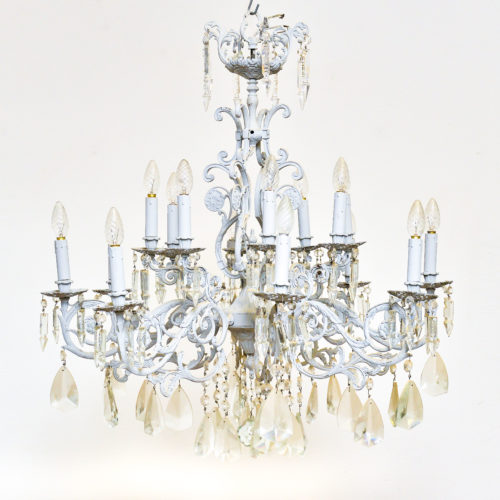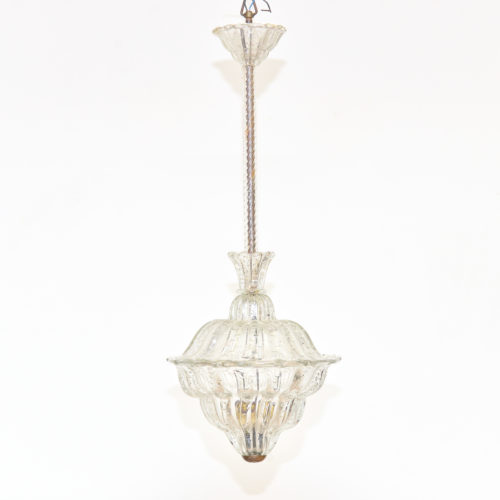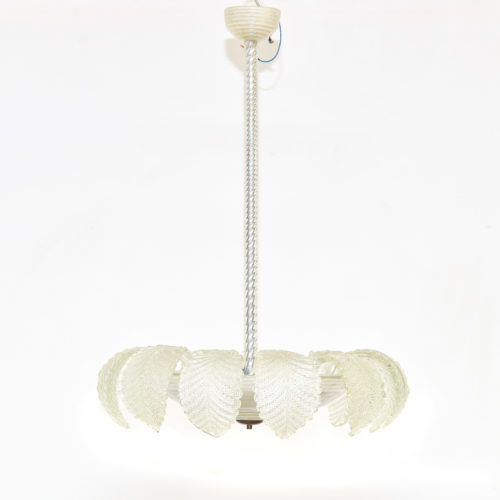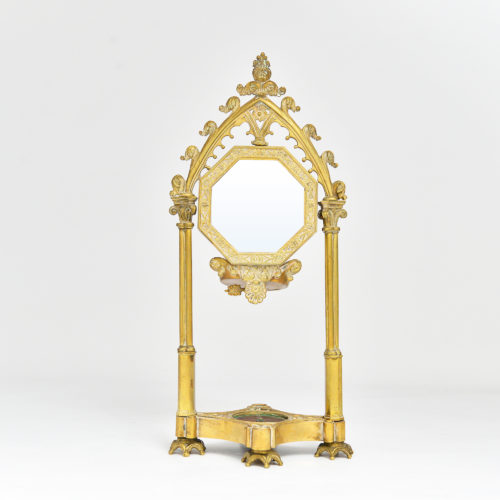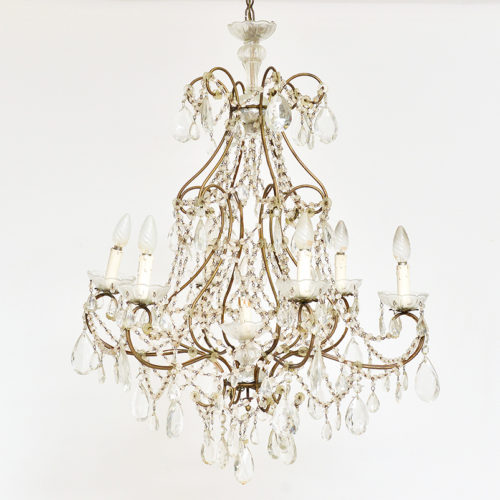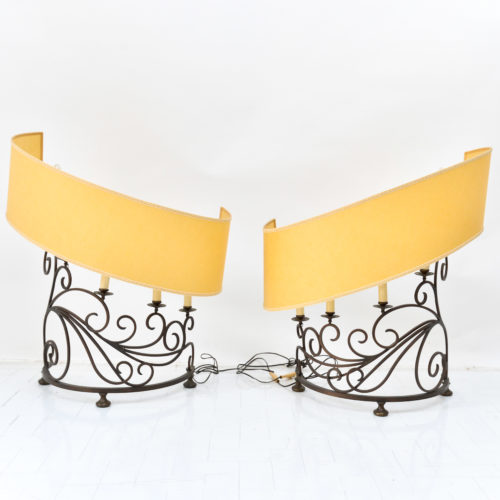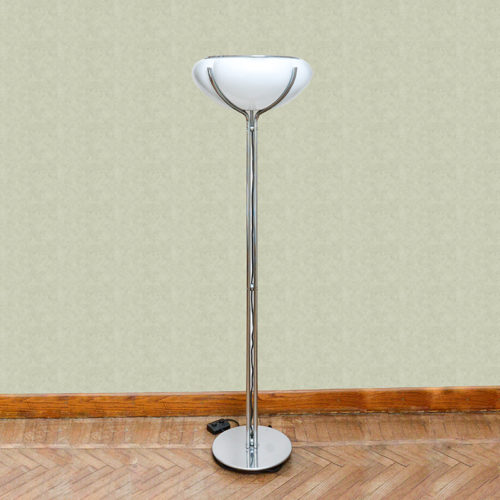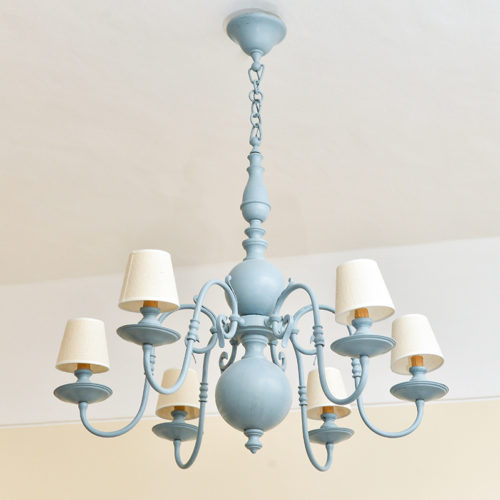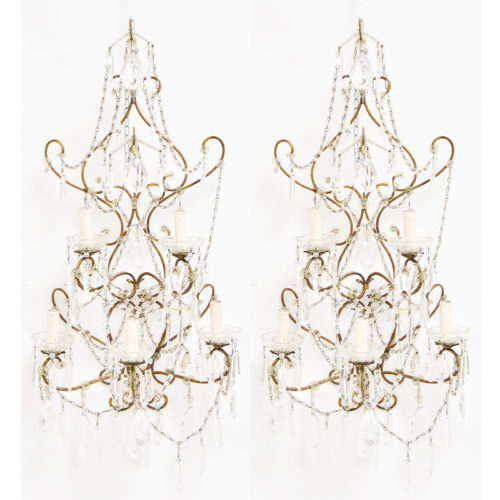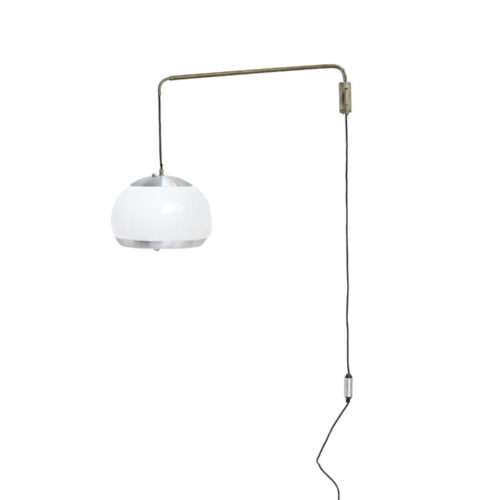Chandelier with drops, in Provencal style, dating back to the 1950s, pickled, gray color.
-
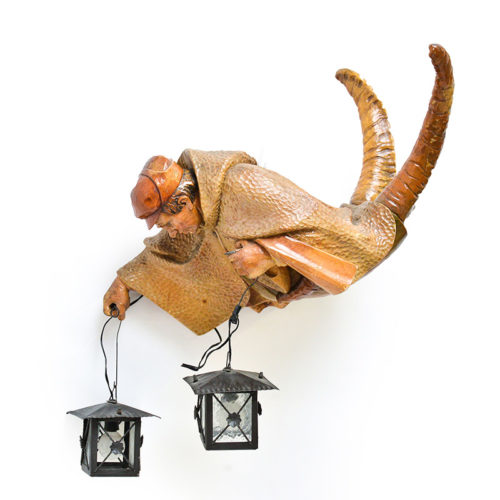 The full name would be Lüsterweibchen or Lüstermännchen, but everyone calls them more simply "luster". These are the anthropomorphic chandeliers, suspended in midair in the living rooms or in front of the doors of the Ampezzo houses, which with their strange features carved in wood and completed by large antlers give reference to the traditions of the mountains. Their origin dates back to the centuries when the border between superstition and reality was rather blurred and man relied on similar apotropaic figures to drive away their fears. Precisely this was the task of the "lusters": to watch over domestic peace, keeping the Evil One away.Period: 1950s Measurements: H 35 x L 61 x P 33 cm
The full name would be Lüsterweibchen or Lüstermännchen, but everyone calls them more simply "luster". These are the anthropomorphic chandeliers, suspended in midair in the living rooms or in front of the doors of the Ampezzo houses, which with their strange features carved in wood and completed by large antlers give reference to the traditions of the mountains. Their origin dates back to the centuries when the border between superstition and reality was rather blurred and man relied on similar apotropaic figures to drive away their fears. Precisely this was the task of the "lusters": to watch over domestic peace, keeping the Evil One away.Period: 1950s Measurements: H 35 x L 61 x P 33 cm
